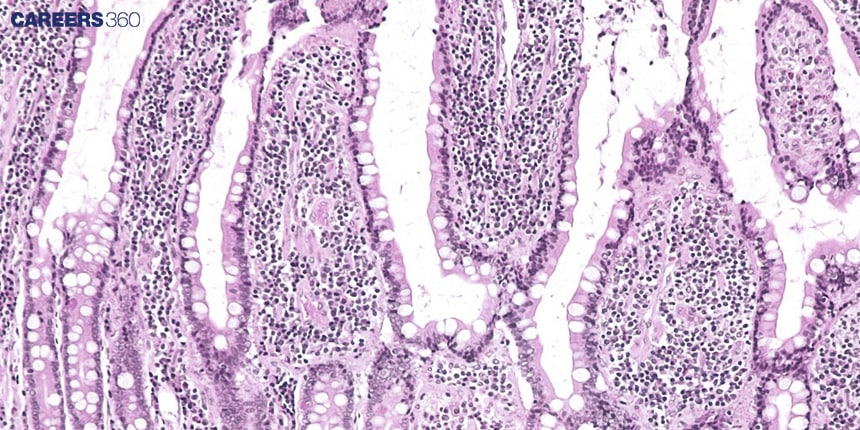Intestinal Glands: Definition, Function, Diagram, Examples
What Are Intestinal Glands?
The specialised structures in the lining of the intestines are called intestinal glands, otherwise referred to as crypts of Lieberkühn or Brunner's glands. In addition, they are very significant in helping digestion and health maintenance through the secretion of different enzymes, mucus, and other substances that help in the assimilation of nutrients into the system of an animal and offer protection against pathogens.
Don't Miss: Most scoring concepts for NEET | NEET papers with solutions
NEET 2025: Syllabus | PYQs | Crack NEET in 2 months - Study Plan
NEET Important PYQ & Solutions: Physics | Chemistry | Biology | NEET PYQ's (2015-24)
- What Are Intestinal Glands?
- Anatomy Of Intestinal Glands
- Location Of Intestinal Glands
- Classification Of Intestinal Glands
- Functions Of Intestinal Glands
- Role In Health And Disease
- Effect Of Diseases On The Function Of Glands:
- The Video Recommended For Intestinal Glands:

Anatomy Of Intestinal Glands
The intestinal glands hold an important place in the structure of the small and large intestines.
The small intestine, namely the duodenum, jejunum, and ileum, is actively engaged in the digestion and assimilation of food.
It contains the glands of Lieberkuhn and Brunner's glands within the submucosa of the duodenum.
The major functions of the large intestine, which is comprised of the colon and the rectum, include water and electrolyte absorption and the formation of faeces.
Additionally, it contains rather similar glandular structures as of the small intestine to secrete mucins that aid in the smooth passage of the intestinal contents.
Location Of Intestinal Glands
Crypts of Lieberkuhn in the small intestine: In the small intestine, chiefly in its mucous membrane.
Brunner's Glands in the duodenum: In duodenal submucosa.
Other Associated Glands in Large Intestine: There are similar glands which assist in the secretion of mucus to smoothen the passage of the faeces.
Classification Of Intestinal Glands
The intestinal glands are primarily divided concerning their morphology and position.
Crypts Of Lieberkuhn
Structure: Mucosal lining seeding the small intestine with tubular glands.
Cell Types
Enterocytes
Paneth cells
Goblet cells
Stem cells
Brunner's Glands
Structure: Compound tubular glands in the submucosa of the duodenum.
Function: Secrete alkaline mucus to neutralise stomach acid.
Functions Of Intestinal Glands
The intestinal glands perform various vital roles in the digestive system.
Secretion Of Digestive Enzymes:
Breakdown of carbohydrates, proteins and fats.
Protects the lining of intestines and ensures smooth passage of the contents
Regulation of Intestinal pH
The stomach acid is neutralised by Brunner's glands to protect the intestinal mucosa.
Enzymes and enterocytes help in absorption.
Protection Against Pathogens
Regulation Of Intestinal Gland Activity
Intestinal gland activity is controlled in a highly detailed manner to guarantee optimal digestive function.
Several hormones, such as secretin and cholecystokinin, stimulate the activity of glands.
The enteric nervous system regulates the secretions of the glands.
The atomic action in the glands is stimulated by the presence of the chyme.
Role In Health And Disease
The intestinal glands play an important role in maintaining the health of the intestines.
Role Of The Intestinal Glands In Maintaining Intestinal Health:
Digestion, absorption of nutrients, and immunity
Common Pathologies Affecting The Intestinal Glands:
Crohn's Disease: A chronic inflammatory disorder that emanates from the gastrointestinal tract.
Ulcerative Colitis: Colon and rectum inflammation with ulcer formation.
Intestinal Infections: Many pathogenic organisms have the potential to alter the function of the glands.
Effect Of Diseases On The Function Of Glands:
This will result in a decrease in the amount of enzymes produced, poor absorption of nutrients, and defective mucosal protective mechanism.
Conclusion
Intestinal glands are integral to the proper functioning of the digestive system; their functions involve efficient digestion, proper absorption of nutrients, and protection from pathogens. Therefore, study at this level concerning structure, functions, and their regulations will help attain gastrointestinal health. Further studies carried out on these glands can make the management and treatment of the associated diseases much easier.
The Video Recommended For Intestinal Glands:
Frequently Asked Questions (FAQs)
Intestinal glands refer to those specialised structures that exist within the intestines and are responsible for secreting enzymes, mucus, and other associated substances for digestion and protection.
Secrete digestive enzymes and other cell types that will then help in the absorption of nutrients and provide protection to the lining of the intestines.
Brunner's glands secrete alkaline mucus to help neutralise stomach acid; hence, saving the duodenum from its acidity and in turn facilitating digestion.
Intestinal glands have enterocytes, Paneth cells, goblet cells, and stem cells. Each cell portion takes part in maintaining various areas of well-being as it pertains to digestion.
The line of major treatment usually includes antibiotic and anti-inflammatory drugs a change of diet; and in advanced cases, surgery.
Also Read
30 Nov'24 03:25 PM
26 Nov'24 05:38 PM
25 Nov'24 06:43 PM
25 Nov'24 05:45 PM
25 Nov'24 04:48 PM
25 Nov'24 03:52 PM
23 Nov'24 04:30 PM
23 Nov'24 10:03 AM